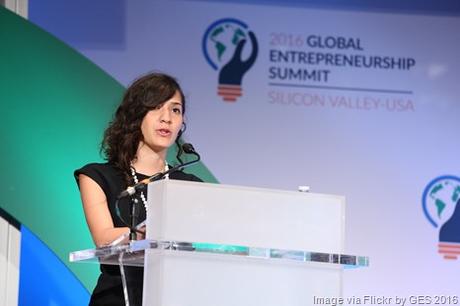 Most entrepreneurs are quick to assert to potential investors that their product or solution will kill the competition, but unfortunately your opinion alone is not enough to convince most experienced investors. They want quantifiable facts and figures on how your offering compares to recognized key players in your domain, and quotes from recognized third-party experts to back you up.
Most entrepreneurs are quick to assert to potential investors that their product or solution will kill the competition, but unfortunately your opinion alone is not enough to convince most experienced investors. They want quantifiable facts and figures on how your offering compares to recognized key players in your domain, and quotes from recognized third-party experts to back you up.
Of course, we all know there are no guarantees, and we like your passion and commitment to future results. We certainly want to hear about any positive feedback you have from potential customers on your idea, your prototype, and your business model, but that better not be the end of the story. We want to see a documented business plan that clearly addresses this challenge.
First of all, you need some convincing market research that your solution addresses a real and growing problem. A competitive advantage to a non-problem or tiny niche is not interesting to investors. They want to be convinced that you are attacking a large opportunity, preferably in the billion dollar range, that will continue to grow at least ten percent per year, without a solution.
Secondly, they want to see your competitive analysis of how you stack up to the top players in the space, by name, with quantitative comparisons and customer value. Skip the fuzzy marketing terms, like “easier to use” and “more functions.” Avoid the temptation to narrow the scope so far as to conclude that you have no competitors, since investors might conclude you have no market.
There are a myriad of other important ways that you can demonstrate your competitive advantages in your presentations, discussions, and business plan, including the following:
Highlight your intellectual property. We all know the challenges involved in getting and protecting a patent, but patents are still strong evidence of a competitive advantage, generally sustainable for twenty years. Don’t forget other intellectual property, including trade secrets, trademarks, copyrights, domain names, and your expert publications.
Capitalize on the experiences of you and your team. Competitive businesses have great teams, as well as great products. If you already have a proven team in a previously successful business, this puts you ahead of most startups, and investors will give you extra consideration. Past leadership success is definitely a competitive advantage.
Promote any inside relationships or customer base. Many markets, including government and education, are especially difficult to penetrate, and connections to public leaders are very valuable. If you already own a known brand, or an existing customer base that is relevant, any market lock or carryover can be a large competitive advantage.
Quantify any dramatic changes to the cost or value equation. Most investors agree that cost reductions need to exceed 20 percent to break loyalty ties and convince customers to change. Thus any order-of-magnitude cost reductions or customer value increases are very important. Reducing margins to lower prices won’t help your case.
Present a clear differentiation and a laser market focus. If your product or strategy is targeted too broadly, or attempts to combine several existing products, it will likely confuse customers and not be competitive to any one segment. Your best competitive position is picking a clearly needy market niche and serving it better than anyone else.
Outline a long-term strategy of maximum depth. While you must start with a narrow focus, make it clear that you are not a “one-trick pony.” Highlight your innovative technology, giving you a great initial product, and documenting a long list of follow-ons as the business scales. This is clear evidence of a long-term competitive advantage.
To survive for any length of time against competitors, you need a “sustainable competitive advantage.” This requires that you demonstrate a competitive lead today, as well as a plan and strategy to maintain that lead over time as the market evolves, and competitors with deep pockets try to replicate your advantage.
Thus, the ultimate competitive advantage is the agility and insight to stay one step ahead of your competitors and changing market needs. No one said it would be easy, but I’m confident you’ll find the payback well worth all your efforts.

